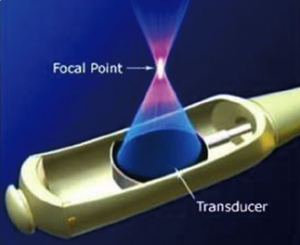
What is the prostate?
The prostate, a part of the male reproductive system, is about the same size and shape as a walnut and weighs about an ounce. It is located below the bladder and in front of the rectum and surrounds the urethra, the tube-like structure that carries urine from the bladder out through the penis. The main function of the prostate is to produce ejaculatory fluid.
What is BPH?
Benign prostatic hyperplasia (BPH), previously referred to as prostatism, is a common urological condition caused by the non-cancerous enlargement of the prostate gland in aging men.
What are some of the risk factors for BPH?
Risk factors for developing BPH include increasing age and a family history of BPH.
What are some of the symptoms associated with BPH?
Since the prostate surrounds the urethra just below the bladder, its enlargement can result in symptoms that irritate or obstruct the bladder. A common symptom is the need to frequently empty the bladder, especially at night. Other symptoms include difficulty in starting the urine flow or dribbling after urination ends. Also, size and strength of the urine stream may decrease.
How is BPH diagnosed?
There are a number of diagnostic test procedures that can be used to confirm BPH. The tests vary from patient to patient, but the following are the most common: digital rectal examination (DRE), PSA test, transrectal ultrasound, urine flow study, bladder scan for residual urine, and cystoscopy.
What are some of the treatments available for BPH?
Watchful waiting: Is recommended as an important option for men who have mild symptoms and do not find them particularly bothersome. It is the least invasive treatment and avoids the risks, inconvenience and costs of medical and surgical treatments. In some men, symptoms improve over time as long as there are no high-risk symptoms like urinary retention, recurrent urinary tract infection, recurrent blood in the urine, bladder stones, kidney failure or bladder diverticula.
Medical therapy: Today’s most common method for controlling moderate symptoms of BPH. Several medications are available to control moderate symptoms of BPH.
Alpha blockers: These drugs, originally used to treat high blood pressure, work by relaxing the smooth muscle of the prostate and bladder neck to improve urine flow and reduce bladder outlet obstruction. Although alpha blockers may relieve the symptoms of BPH, they do not reduce the size of the prostate. They are taken orally, once or twice a day and work almost immediately. Commonly prescribed alpha blockers include: alfuzosin, terazosin, doxazosin and tamsulosin. Side effects can include headaches, dizziness, lightheadedness, fatigue and difficulty breathing.
5-Alpha-Reductase Inhibitors: There are two medications available in this class, dutasteride and finasteride that work completely different than alpha blockers. In some men, dutasteride or finasteride can relieve BPH symptoms, increase urinary flow rate and actually shrink the prostate.
What are some of the minimally invasive treatments available for BPH?
Prostatic stent (stenting): Anesthesia is not required for this procedure. The technology involves placing a spring-like contraption inside the prostatic part of the urethra to hold it open. There are many different kinds of stents but their overall use is limited. This is usually best suited for patients who have many medical problems or who are high-risk for surgery. Serious complications include urinary incontinence, dislodgement of stent position, stone formation on the stent with blockage and difficulty removing the stent. Generally, prostatic stents are used for the same patients who would otherwise use an indwelling catheter or transurethral microwave thermotherapy (TUMT).
High-intensity focused ultrasound (HIFU): Anesthesia is usually required for this procedure. A special ultrasound probe is placed into the rectum near the prostate. Ultrasound waves heat the prostate up to very high temperatures, which causes destruction to the prostate tissue. The heated prostate tissue is destroyed and initially swells but then shrinks.
Holmium laser enucleation of prostate (HoLEP): After the patient receives anesthesia, the surgeon inserts an instrument called a resectoscope through the penis into the urethra. A visual lens and laser are passed through the hollow center of the instrument. The prostate tissue is vaporized using the holium:YAG laser. There is very little bleeding and recovery time is cut significantly. Typically, the patient has a catheter removed the next day and stays overnight in the hospital one day.
Interstitial laser coagulation: Anesthesia is usually required for this procedure, but patients can usually go home the same day. The technology involves placing a “cystoscope” (metal tube through which the visual lens and laser can be passed). A laser is used to pierce through into the prostate and the laser energy burns the tissue.
Transurethral electroevaporation of the prostate (TUVP): After the patient receives anesthesia, the surgeon inserts an instrument called a resectoscope through the penis into the urethra. An electrode moves across the surface of the prostate and transmits current that vaporizes prostate tissue. The vaporizing effect penetrates below the surface area being treated so underlying blood vessels are coagulated and sealed. Bleeding and fluid absorption are minimal and patients can usually return home without a catheter after an overnight hospital stay.
Transurethral microwave thermotherapy of the prostate (TUMT): This is an office-based procedure performed with topical and oral pain medication and does not require anesthesia. Computer-regulated microwaves are sent through a catheter to heat portions of the prostate. A cooling system is required in some types for better tolerance. Traditionally, the best use of this procedure has been for patients who have too many medical problems for more invasive surgery or for patients who truly wish to avoid any type of anesthesia. Benefits are that there is no need for anesthesia and there is no blood loss or fluid absorption (these would be significant benefits in a person with a weak heart). Patients usually go home the same day.
Transurethral radio frequency needle ablation of the prostate (TUNA): The procedure involves anesthesia and medications to make the patient sleepy. The technology involves heating of tissue using radio frequency energy transmitted by needles inserted directly into the prostate. High frequency radio waves heat the prostate up to very high temperatures. The heated prostate tissue is destroyed and initially swells but then shrinks. Most men require a catheter for a period of time after this procedure. Advantages in the use of TUNA include the limited anesthesia requirement, the ability to perform the procedure in an office setting and avoidance of serious complications sometimes associated with other procedures.
Photoselective vaporization of the prostate (PVP): This is fast becoming a very popular procedure performed either in a well equipped office or as an out-patient at the hospital. It uses a high-powered laser that vaporizes the obstructing prostate tissue with minimal bleeding or side effects. This procedure can serve to get men off of medical therapy. It is effectively replacing more invasive surgical treatment.
Catheterization: Placement of a catheter into the bladder will temporarily drain urine. Catheters can be placed intermittently every six to eight hours—clean intermittent catheterization—or left in place for one to three months at a time (indwelling). Catheters can be placed either through the urethra or by making a small puncture into the bladder above the pubic bone (called a suprapubic tube). Infection is the biggest risk of having a catheter in place for long periods, as bacteria can stick to the surface of the catheter, making it difficult for the body’s immune system or antibiotics to clear the organisms. Another risk is that after a few years there is a higher risk of bladder cancer due probably to the long-term irritation caused by the catheter sitting in the bladder. Catheterization, performed by the individual or a caregiver every six to eight hours, minimizes the risk of infection and cancer compared with an indwelling catheter.
Frequently Asked Questions:
Is BPH a rare condition?
No, it is very common. It will affect approximately 50 percent of men between the ages of 51 and 60 and up to 90 percent of men over the age of 80.
Does BPH lead to prostate cancer?
No, BPH is not cancer and cannot lead to cancer. Still, both problems can happen at the same time. There may not be any symptoms during the early stages of prostate cancer. So whether their prostate is enlarged or not, men should talk to their health care providers about whether prostate cancer screening is right for them.
Which type of drugs are the best?
To date, there are not enough research data to predict who will respond to medical therapy or which drug will be better for an individual patient.
How do I know if oral medications are the best treatment for me?
If you are diagnosed with BPH, you should discuss all treatment options with your urologist. Together, you can decide whether medication or surgical treatment is best for you.
If I am 65 and healthy with mild urinary symptoms, which is the best treatment for me?
As long as your symptoms are mild, your quality of life is not very affected and you do not have any compelling reason to have invasive surgical therapy right away, you can start with watchful waiting or the medical therapies. If those options are ineffective or your symptoms worsen over time, then minimally invasive therapy or surgical treatment may be the answer.
For more information on Laser Prostate Surgery please visit this link: https://safemedtrip.com/medical-services/urological-treatment-in-india/laser-prostate-surgery.html

 Click to WhatsApp
Click to WhatsApp +91-9899993637
+91-9899993637




